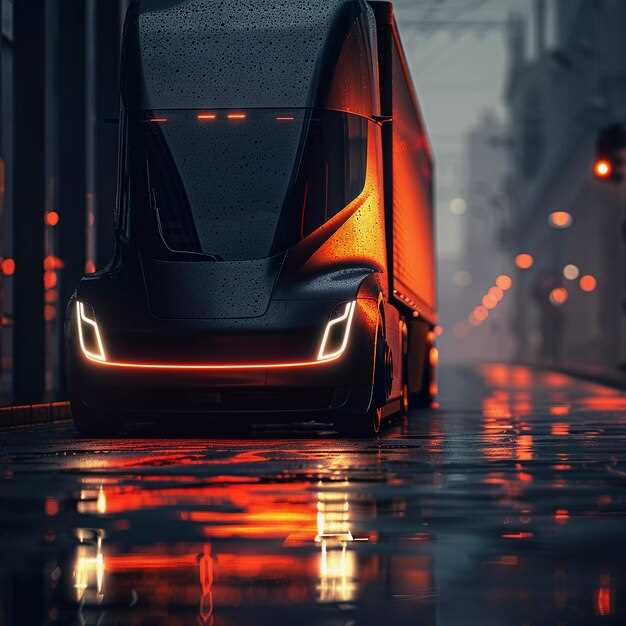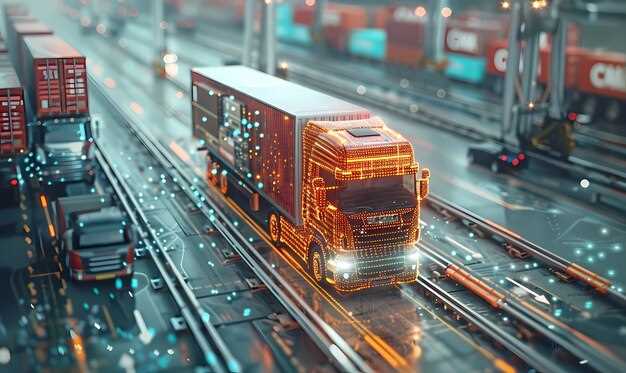

As we approach 2025, the landscape of the trucking industry is poised for a remarkable transformation driven by cutting-edge innovation. The new truck models set to hit the market are not just improvements over their predecessors; they embody a leap into a future where technology redefines efficiency, safety, and sustainability. The emphasis on innovation in engineering and design is aimed at enhancing the overall performance of trucks while reducing their environmental footprint.
One of the most significant trends in 2025 truck models is the integration of advanced autonomous driving systems. These systems leverage artificial intelligence and machine learning to improve navigation and decision-making processes, thereby increasing safety on the highways. As these innovations become more prevalent, the industry is on the cusp of a paradigm shift where human drivers may no longer be the sole operators of these heavy-duty vehicles.
Furthermore, the incorporation of smart technology in truck models will revolutionize how logistics and fleet management are conducted. Real-time data analytics, connectivity features, and IoT (Internet of Things) applications will empower fleet operators to monitor vehicle performance and optimize routes, resulting in significant cost savings and increased operational efficiency. The trucks of 2025 are designed not only to deliver goods but to do so in a way that is smart and resource-efficient.
This article will explore the innovative features set to characterize the trucks of 2025, focusing on the driving technologies, connectivity advancements, and sustainability measures that are reshaping the future of the trucking industry.
Advanced Driver Assistance Systems in 2025 Trucks
The trucking industry is experiencing a transformative shift due to innovative technology, particularly in the realm of Advanced Driver Assistance Systems (ADAS). In 2025, these systems are expected to reach new heights, enhancing safety and operational efficiency across the fleet.
One of the primary advancements in ADAS will be the integration of improved sensor technology, including advanced lidar and radar systems. These sensors will provide trucks with enhanced environmental awareness, enabling real-time detection of obstacles, pedestrians, and other vehicles. This innovation will significantly reduce the likelihood of accidents, making roadways safer for all users.
Moreover, the implementation of adaptive cruise control systems will allow trucks to maintain optimal speeds while adjusting to surrounding traffic conditions. This tech not only improves fuel efficiency but also contributes to smoother driving experiences, ultimately reducing driver fatigue during long-haul trips.
Another notable feature will be automated lane-keeping technology. In 2025, trucks equipped with this capability will be able to assist drivers in maintaining their lane, even in challenging conditions. This innovation is designed to minimize unintentional lane departures, further enhancing safety on highways.
Furthermore, the development of predictive analytics will enable trucks to anticipate potential hazards and respond accordingly. By analyzing data from various sources, including traffic patterns and weather conditions, ADAS will facilitate informed decision-making, improving overall driving performance.
Collaboration between trucks and smart infrastructure will also play a crucial role in the advancement of ADAS. In 2025, vehicles will increasingly communicate with traffic signals and other road systems, allowing for synchronized movements that enhance traffic flow and minimize congestion.
Finally, as the industry shifts towards electrification, ADAS will support the integration of electric powertrains, providing real-time diagnostics and management of energy consumption. This tech-centric approach will not only aid in reducing emissions but will also promote sustainable operations within the truck transport sector.
In conclusion, the Advanced Driver Assistance Systems in 2025 trucks will embody the essence of innovation, significantly improving safety, efficiency, and sustainability. These technological advancements will not only redefine the driving experience but also position the trucking industry at the forefront of smart transportation solutions.
Electrification Trends and Charging Solutions for Trucks

The transition to electrification in the trucking industry is gaining momentum as manufacturers focus on sustainability and efficiency. In 2025, a significant number of trucks will feature advanced electric drivetrains, marking a pivotal shift in freight transportation. Innovations in battery technology are paving the way for longer ranges and shorter charging times, thus addressing one of the major concerns of fleet operators.
Battery advancements are at the forefront of this electrification trend. New lithium-ion and solid-state batteries promise higher energy density, leading to trucks that can travel greater distances on a single charge. These batteries are not only lighter but also have improved charging capabilities, which reduces downtime for fleet operations.
Alongside battery improvements, the development of charging infrastructure is crucial. Network expansion is focusing on high-power charging stations strategically located along major freight routes. This tech enables trucks to recharge quickly, significantly lessening the logistical challenges associated with long-haul electric transport. Smart charging solutions, which optimize energy use during peak and off-peak hours, are also becoming more prevalent, providing cost savings to operators.
The integration of vehicle-to-grid (V2G) technology is another trend shaping the future of truck electrification. This technology allows trucks to not only draw power but also supply it back to the grid, thus enhancing energy management systems. Fleets can benefit from additional revenue streams while contributing to grid stability, making it a win-win scenario for the tech and logistics sectors.
Finally, the rise of telematics in electric trucks is poised to enhance operational efficiency. These systems will monitor battery health, optimize charging schedules, and provide real-time data analytics, allowing fleet managers to make informed decisions. By harnessing data, operators can ensure that their electric fleets are as efficient and productive as their conventional counterparts.
Impact of Digital Connectivity on Fleet Management

The integration of digital connectivity in the trucking industry is transforming fleet management practices. This innovation allows for real-time data exchange, enhancing decision-making processes and operational efficiency.
- Real-Time Monitoring: Advanced telematics systems enable fleet managers to track vehicle locations, fuel efficiency, and driver behavior in real time. This leads to:
- Optimized routing and reduced fuel costs.
- Improved safety through driver performance analytics.
- Predictive Maintenance: Digital connectivity facilitates predictive maintenance strategies, where data from sensors indicates potential issues before they become critical. Benefits include:
- Reduced downtime due to proactive repairs.
- Extended vehicle lifespan through timely maintenance.
- Enhanced Communication: Digital tools improve communication between drivers and fleet managers. This leads to:
- Faster problem resolution on the road.
- Better route adjustment based on current traffic conditions.
- Data Analytics: With the collection of vast amounts of data, fleet managers can analyze performance metrics and trends, allowing for:
- Informed strategic planning.
- Identifying areas for cost reduction and efficiency improvement.
Overall, the impact of digital connectivity on fleet management is profound, driving innovation in the trucking sector and paving the way for smarter, more efficient operations in 2025 and beyond.